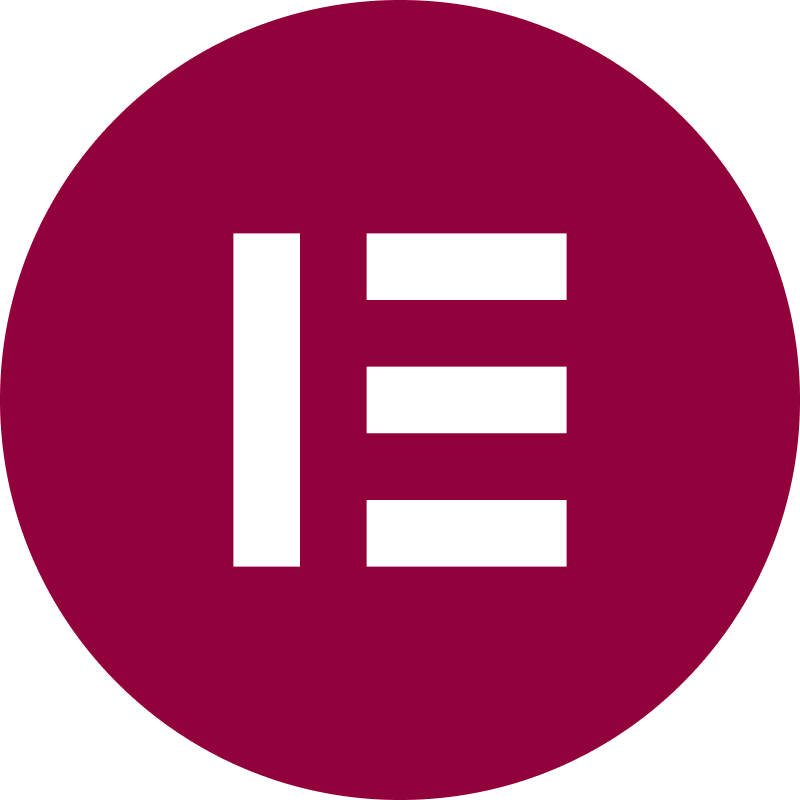In the bustling digital marketplace, your landing page is not just a welcome mat; it’s the door, the handshake, and the first word that starts the conversation between you and your potential customers. With the stakes this high, choosing the right tool to craft this vital piece of your online presence can feel daunting. Enter the ring two contenders: Elementor and Ucraft, each with its unique strengths and philosophies. Whether you’re building your first site or looking to revamp an existing page, the question looms: Which tool is the best fit for your digital needs?
| Elementor | Ucraft |
|---|---|
 |  |
| G2 Score – 4.5 out of 5 stars | G2 Score – 4.6 out of 5 stars |
| TrustRadius Score – 8.9/10 | TrustRadius Score – N/A |
Usability and User Experience
When it comes to building landing pages, not everyone is a seasoned coder or a design wizard. This is where the usability and user experience (UX) of a landing page tool take center stage. Let’s dive into how Elementor and Ucraft stack up in making the building process as smooth as peanut butter.
Elementor: Drag, Drop, Design
Elementor has become a household name in the WordPress ecosystem for a reason. It’s like the friendly neighbor who lends you exactly the tool you need for any job, no more and no less. With its drag-and-drop interface, Elementor makes designing a landing page feel like playing with Legos. You have a plethora of blocks (widgets) at your disposal, each customizable to fit your vision. Want to add a testimonial slider? Just drag it in. Need to adjust the padding on your header? A few clicks, and you’re there.
But what truly sets Elementor apart is its real-time design feedback. As you tweak and tune, you see your changes come to life instantly, no refreshing required. This immediate response is invaluable for both beginners and seasoned designers alike, making the design process not only efficient but also genuinely enjoyable.
However, with great power comes a slight complexity. The vast array of options and settings can be overwhelming for first-timers. The learning curve isn’t steep, but it’s there. Yet, for those willing to explore, Elementor rewards curiosity with unparalleled creative freedom.
Ucraft: Simplicity Meets Sophistication
If Elementor is the versatile neighbor, Ucraft is the minimalist architect. Ucraft offers a sleek, user-friendly interface that emphasizes simplicity without sacrificing sophistication. Its design ethos is about getting you from idea to live page with as little friction as possible. The toolbox might seem less extensive than Elementor’s at first glance, but it’s precisely curated to include everything you need for a professional-looking site.
Ucraft shines in its template-driven approach. Each template is a masterpiece of design thought, crafted to cater to various industries and aesthetics. This focus on high-quality, ready-made designs allows users to launch polished pages quickly, with minimal fuss and customization required. It’s an ideal scenario for those who prefer a clean, no-nonsense path to a beautiful landing page.
Yet, this streamlined approach means that if you’re looking to break the mold with radical customizations, Ucraft might feel a bit restrictive. It offers flexibility within the framework of its designs but doesn’t quite match Elementor’s open-ended sandbox.
Customization and Flexibility
The ability to tailor your landing page to the exact needs of your audience and your brand is critical. After all, in a sea of online content, standing out is key to capturing attention. Here’s how Elementor and Ucraft fare when it comes to bending the rules of design to your will.
Elementor: The Master of Customization
Elementor doesn’t just open the door to customization; it removes the doors entirely, letting your creative spirit run free. With Elementor, your ability to customize is only limited by your imagination. It offers an extensive library of widgets and design elements, from basic text and image blocks to advanced features like sliders, forms, and tabs. Each element is a starting point, ready to be molded to fit your brand’s style and voice.
Moreover, Elementor’s responsiveness controls are second to none. You can tweak your design for every screen size, ensuring that your landing page looks fantastic on desktop, tablet, and mobile. This level of control extends to margins, padding, typography, and color schemes, empowering you to achieve pixel-perfect layouts.
For those who know their way around CSS, Elementor offers additional custom CSS fields, giving you the power to apply specific styles and animations that the interface options might not cover. This feature is a godsend for designers and developers looking to push the boundaries of web design.
Ucraft: Elegance in Simplicity
Ucraft, while more restrained than Elementor in its customization offerings, provides a balanced and accessible suite of design options that cater to users who seek efficiency alongside beauty. Ucraft’s strength lies in its blend of simplicity and flexibility. You can choose from a selection of professionally designed blocks, which can be easily customized within the constraints of your chosen template. This approach streamlines the design process, making it less daunting for beginners and those with limited design experience.
The platform offers a solid range of editing tools that allow for the customization of layouts, backgrounds, and fonts, ensuring that you can imbue your landing page with a sense of individuality and brand alignment. While you might not find the granular control over every element as you would in Elementor, Ucraft provides enough flexibility to create unique, visually appealing pages without the complexity.
Ucraft also emphasizes responsive design, ensuring that pages created on its platform automatically adjust to look great on any device. This built-in responsiveness means one less thing to worry about, allowing you to focus more on content and less on technical adjustments.

Related: Check out our free SEO suite

Performance and SEO
In the digital realm, the speed of your landing page and its ability to rank on search engines can make or break your online presence. Here’s how Elementor and Ucraft stand up to the demands of performance and search engine optimization.
Elementor: Speed with Strategy
Elementor acknowledges the importance of website speed and provides a robust framework to create fast-loading pages. However, due to its extensive customization features, the onus is partly on the user to ensure that design choices do not negatively impact page load times. High-resolution images, numerous widgets, and complex animations can slow down a page if not optimized correctly. Fortunately, Elementor offers a suite of tools and recommendations to help mitigate these issues, such as image optimization, code minification, and the use of lightweight themes.
From an SEO perspective, Elementor shines by offering integrated features that support search engine optimization efforts. Users can easily edit meta titles and descriptions, generate sitemaps, and apply schema markup directly within the platform. Additionally, Elementor’s pages are designed to be responsive and mobile-friendly, a crucial factor in Google’s ranking algorithms. The platform’s compatibility with popular SEO plugins like Yoast SEO further enhances its SEO capabilities, making it easier for users to optimize their content and improve their search rankings.
Ucraft: Optimized Out of the Box
Ucraft takes a slightly different approach, focusing on delivering optimized performance and SEO capabilities straight out of the box. The platform is built with speed in mind, utilizing efficient coding practices and automatic image optimization to ensure that landing pages load quickly across all devices. This emphasis on performance is particularly beneficial for users who may not have the technical expertise to manually optimize their pages.
SEO-wise, Ucraft provides a solid foundation for users to improve their search engine visibility. The platform allows for easy editing of meta tags, URLs, and alt attributes, essential elements for SEO. Ucraft also ensures that all its templates are responsive and mobile-optimized, catering to the mobile-first indexing approach of search engines. While it might not offer as many advanced SEO tools and integrations as Elementor, Ucraft covers all the basics, ensuring that users can achieve good search engine rankings with minimal fuss.
Integration and Compatibility
The ability to integrate with third-party services, apps, and platforms can significantly enhance the functionality and efficiency of your landing pages. Whether it’s email marketing tools, social media platforms, or analytics services, integration capabilities can dictate the versatility of your landing page tool.
Elementor: A Symphony of Integrations
Elementor, known for its flexibility and power, extends its prowess into the realm of integrations and compatibility. The platform acts like a conductor, orchestrating a symphony of different applications, plugins, and services to work in harmony. Users of Elementor have the luxury of integrating a wide array of marketing tools, analytics services, and social media platforms directly into their landing pages. This is possible thanks to Elementor’s open ecosystem, which encourages third-party developers to create extensions and plugins that seamlessly connect with the builder.
The strength of Elementor in this domain lies not only in the sheer volume of integrations available but also in the depth of these integrations. Whether it’s adding a MailChimp form for capturing leads, integrating WooCommerce for e-commerce functionality, or connecting to Zapier to automate workflows, Elementor makes these integrations straightforward. This seamless connectivity allows users to create more dynamic, interactive, and functional landing pages that can serve a multitude of purposes beyond mere information dissemination.
However, this wide array of options comes with its challenges. The onus is on the user to ensure that these integrations work smoothly together and do not impact the performance of the landing page. Moreover, navigating through this vast ecosystem of plugins and integrations may require a steeper learning curve, especially for those who are less tech-savvy.
Ucraft: Streamlined for Efficiency
Ucraft takes a more streamlined approach to integration and compatibility, focusing on providing users with a curated selection of integrations that cover the essentials of website operation and online marketing. This approach is akin to a minimalist chef who carefully selects a handful of quality ingredients to create a dish that’s simple yet profoundly satisfying. Ucraft’s platform integrates smoothly with key services such as Google Analytics for tracking website performance, Disqus for adding comment functionality, and a range of popular payment gateways for e-commerce transactions.
What stands out about Ucraft’s approach is the ease with which these integrations can be implemented. The platform is designed to be intuitive, ensuring that even users with minimal technical background can add and manage these services without needing to dive into code or navigate complex settings. This ensures that the landing pages remain not only functional but also streamlined and efficient, without the risk of bloating that can come from excessive plugins.
The trade-off, however, is that users looking for niche or highly specialized integrations may find Ucraft’s offerings a bit limiting. While it covers the basics and then some, the platform’s focus on simplicity means that it may not have the same breadth of integration options as Elementor. For users whose needs align with the integrations Ucraft offers, this is hardly a drawback; instead, it’s a streamlined pathway to creating a cohesive and efficient online presence.
Pricing
| Elementor | Elementor offers a free version with basic widgets and templates. Their paid plans start at $49 per year for one website, including premium widgets, templates, and support, with higher-tier plans available for additional websites and advanced features. |
| Ucraft | Ucraft provides a free tier that includes basic landing page creation, with limitations such as Ucraft branding. For access to more professional features and to remove Ucraft branding, their pricing starts at $10 per month for the Pro Website plan. |
Conclusion
Elementor emerges as a beacon of customization and flexibility, a tool designed for those who dare to dream in vivid colors and intricate designs. It is a platform that invites exploration and experimentation, rewarding users with the ability to manifest their unique digital visions into reality. With its extensive array of integrations, Elementor is suited for those who seek to weave a complex web of functionalities into their landing pages, making it an ideal choice for users with a penchant for detail and a desire for control.
Ucraft, with its elegance in simplicity, offers a serene counterpoint to Elementor’s bustling marketplace of possibilities. It is the essence of clarity and efficiency, providing a streamlined path to creating beautiful, responsive landing pages. Ucraft’s focus on essential integrations and an intuitive user interface makes it a sanctuary for users who seek to demystify the process of website building, allowing them to focus on the message rather than the medium.
Read Next:
- Utilizing A/B Testing with SEO Analytics for Startup Optimization
- Tracking Startup SEO Success through Rank Tracking Tools
- Utilizing SEO Analytics to Optimize Startup Site Structure
- Measuring Video Content Performance through SEO Analytics
- 31+ Top Social Media Management tools Compared! (2023)






















Comments are closed.